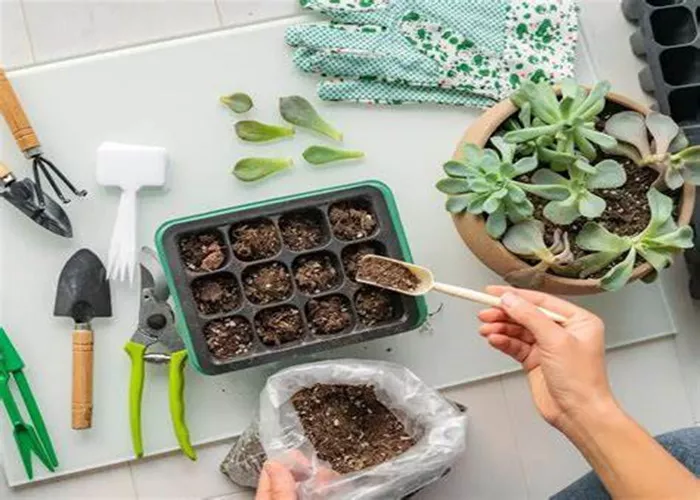Succulents have gained immense popularity among plant enthusiasts for their unique beauty, low maintenance needs, and resilience. For many, growing succulents from seeds is an exciting venture, but a common question arises: “How long do succulent seeds last?” This article delves into the longevity of succulent seeds, factors affecting seed viability, proper storage methods, and best practices for successful germination.
Understanding Seed Viability
What is Seed Viability?
Seed viability refers to the ability of a seed to germinate and produce a healthy plant. Viable seeds are capable of sprouting under suitable conditions, while non-viable seeds will not germinate. The lifespan of seeds varies significantly among different plant species, including succulents.
General Longevity of Succulent Seeds
On average, succulent seeds can remain viable for 1 to 3 years when stored under optimal conditions. However, some seeds may last longer, while others may lose viability more quickly. The longevity of succulent seeds is influenced by several factors:
Species Variation: Different succulent species have varying seed lifespans. For example, seeds from Echeveria and Sedum may remain viable for several years, while seeds from Agave may have a shorter viability period.
Seed Quality: The initial quality of the seeds plays a crucial role in their longevity. Freshly harvested seeds tend to have higher viability than older seeds that have been stored improperly.
Storage Conditions: Environmental factors such as temperature, humidity, and light exposure significantly impact seed viability. Proper storage can extend the lifespan of succulent seeds.
Factors Affecting Seed Longevity
Environmental Conditions
Seeds require specific environmental conditions to maintain their viability. Key factors include:
Temperature: Seeds should be stored in a cool environment. High temperatures can accelerate seed aging and reduce viability. Ideally, seeds should be kept at temperatures below 70°F (21°C).
Humidity: Excess moisture can lead to mold growth and seed deterioration. Conversely, very dry conditions can cause seeds to lose viability. A relative humidity level of around 20-30% is ideal for seed storage.
Light Exposure: Light can degrade seeds over time. Storing seeds in opaque containers or dark environments can help preserve their viability.
Seed Preparation
Before storage, it’s essential to prepare the seeds properly. Here are some tips:
Drying: If seeds are freshly harvested, they should be thoroughly dried before storage. Excess moisture can lead to mold and rot. Spread seeds out on a paper towel or a clean surface for a few days until they are completely dry.
Cleaning: Remove any debris or plant material from the seeds before storage. This helps prevent mold and pest infestations.
Seed Packaging
The way seeds are packaged can also influence their longevity. Consider the following options:
Airtight Containers: Store seeds in airtight containers to minimize exposure to moisture and air. Glass jars, vacuum-sealed bags, or sealed plastic containers are excellent choices.
Desiccants: Including desiccant packets (silica gel) in the storage container can help absorb excess moisture and maintain a dry environment for the seeds.
Proper Storage Methods for Succulent Seeds
To maximize the longevity of succulent seeds, follow these storage methods:
Cool and Dark Environment
Store seeds in a cool, dark place, such as a refrigerator or a cool basement. Avoid areas with fluctuating temperatures, such as near ovens or heating vents.
Labeling
Clearly label your seed containers with the species name and the date of collection or purchase. This practice helps track seed age and ensures you use the oldest seeds first.
Periodic Checks
Regularly check your stored seeds for signs of mold, pests, or deterioration. If you notice any issues, remove affected seeds immediately to prevent contamination.
Testing Seed Viability
Before planting, it’s a good idea to test the viability of older seeds. Here’s a simple method to assess seed viability:
Germination Test
Gather Materials: You’ll need a few seeds, a damp paper towel, a plastic bag, and a warm location.
Prepare the Paper Towel: Moisten the paper towel and wring it out to remove excess water. Lay the seeds on one half of the towel and fold the other half over the seeds.
Seal in a Bag: Place the folded paper towel in a plastic bag to maintain humidity.
Warm Location: Place the bag in a warm area with indirect light.
Wait: Check the seeds after 7 to 14 days. Count how many seeds have germinated. If a significant percentage of seeds sprout (usually 70% or more), they are still viable. If not, consider replacing them.
Best Practices for Growing Succulent Seeds
Once you have determined that your seeds are viable, follow these best practices for successful germination:
Choose the Right Soil
Use a well-draining soil mix specifically formulated for succulents. A combination of potting soil, perlite, and coarse sand is ideal for promoting drainage and preventing root rot.
Optimal Conditions for Germination
Temperature: Maintain a temperature range of 70°F to 80°F (21°C to 27°C) for optimal germination.
Moisture: Keep the soil consistently moist but not soggy. Use a spray bottle to mist the soil lightly, ensuring it does not dry out completely.
Light: Provide bright, indirect light for the seeds. Avoid direct sunlight, which can scorch young seedlings.
Patience and Monitoring
Germination times for succulent seeds can vary widely, ranging from 7 to 30 days or more, depending on the species. Monitor the seeds regularly, ensuring they receive adequate moisture and light.
Transplanting Seedlings
Once seedlings develop their first true leaves, they can be transplanted into individual pots. Handle seedlings gently to minimize transplant shock and provide them with the same care as mature succulents.
Conclusion
Understanding how long succulent seeds last and the factors that affect their viability is crucial for successful propagation. On average, succulent seeds can remain viable for 1 to 3 years, but proper storage and handling can extend their lifespan. By following best practices for seed storage, testing viability, and providing optimal growing conditions, you can enjoy a thriving collection of succulents grown from seeds. Whether you are a seasoned gardener or a novice, the journey of growing succulents from seeds is a rewarding experience that adds beauty and diversity to any space.


